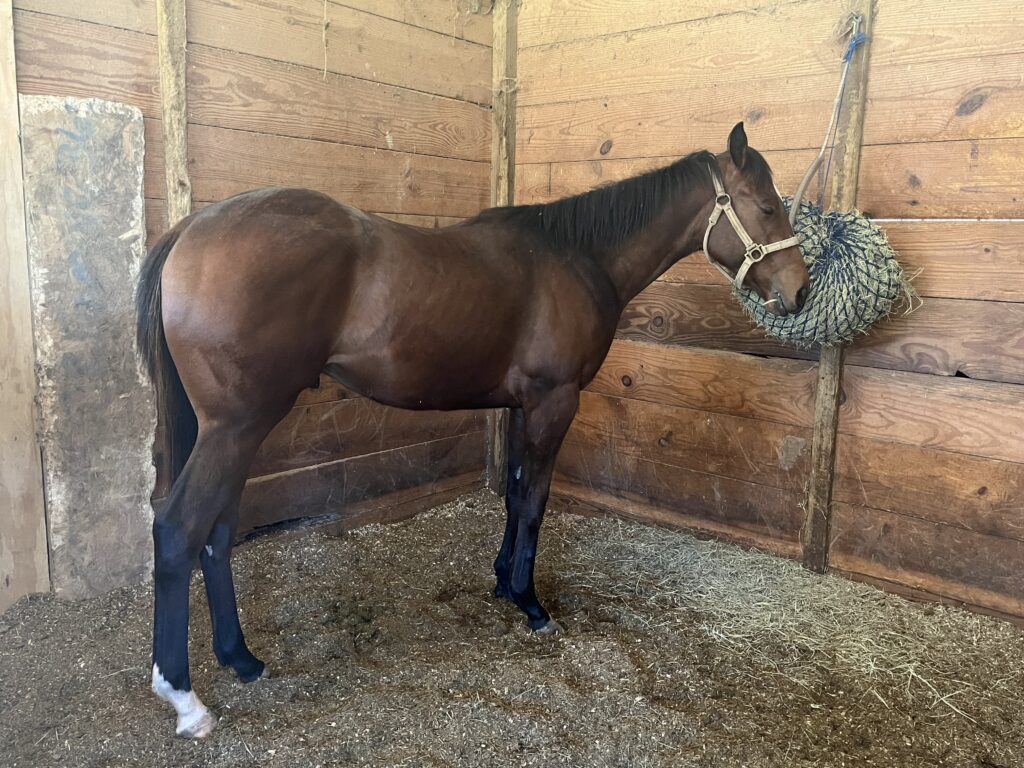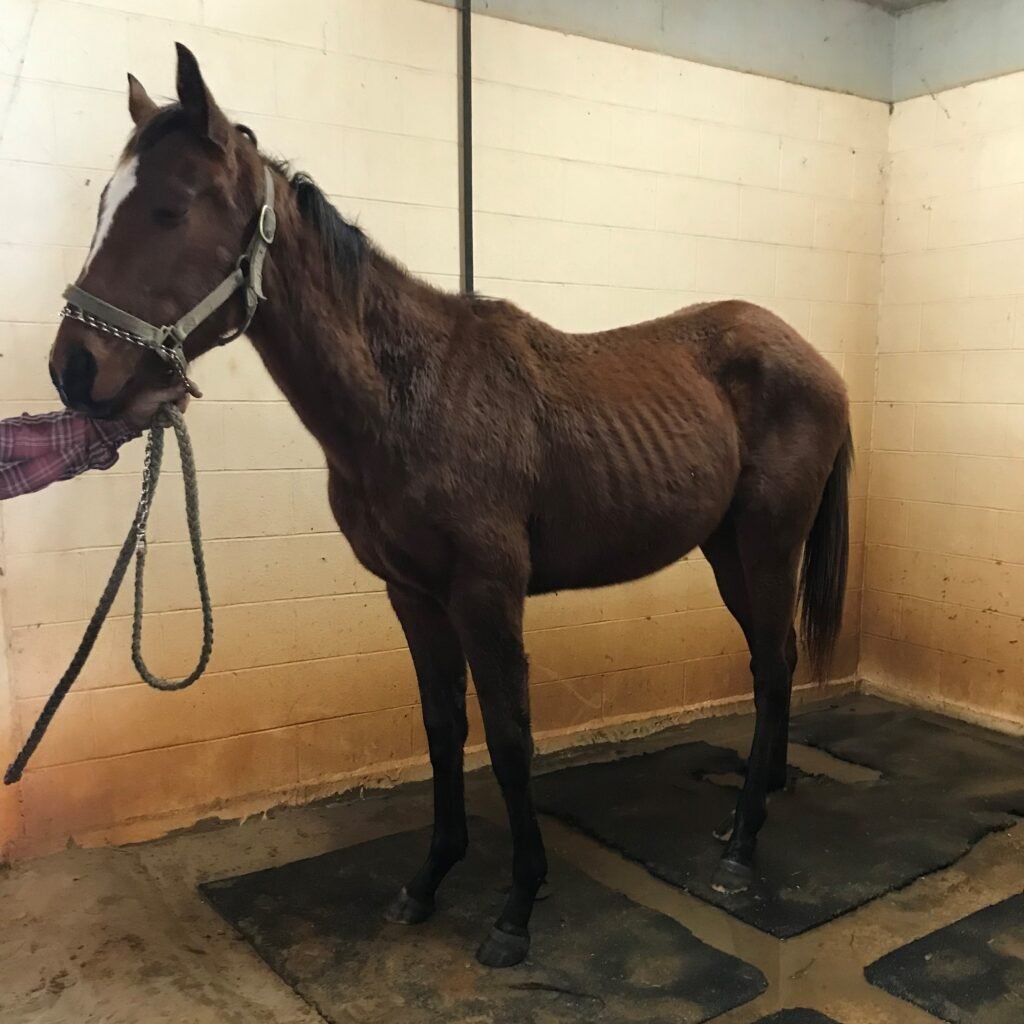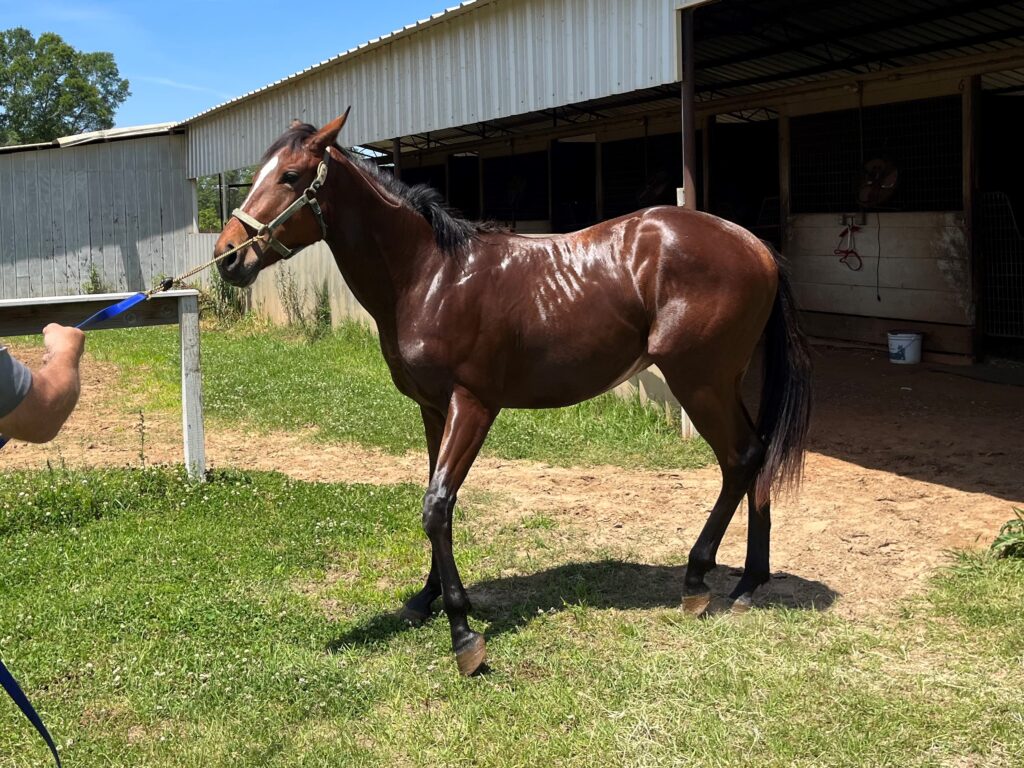Last updated: February 16, 2023
Any links on this page that lead to products on Amazon are affiliate links and I earn a commission if you make a purchase. Thanks in advance – I really appreciate it!
Hives appear on my neighbor’s horse periodically. He is a conscientious owner and always has his horse’s best interest in mind, so he asked me if it was ok for him to ride the animal with the bumps.
Don’t ride a horse with an active outbreak of hives. These small bumps on a horse’s skin are irritated by tack and heat and typically don’t last too long. So it’s in your horse’s best interest to take a break from riding it until the hives have gone away.
Horse owners often think it’s ok to ride their horses with minor skin irritations, but riding a horse with hives is painful for the animal and could lead to more significant health issues.
What are hives?
Hives, also known as urticaria, are raised swellings or welts on your horse’s skin. These little bumps are around 0.5 inches in diameter and can be as large as 8 inches in width.
Hives can sometimes be itchy and sometimes not. The neck and head are the most common area affected by the bumps; however, they can be anywhere on the horse’s body.
There is no fixed duration for when the hives may appear after being exposed to a trigger. It can take minutes or even days. If your horse only has a one-time outbreak, then you typically don’t have to worry much.
Just make sure your horse doesn’t feel too irritated or uncomfortable, and the little bumps will go away on their own in a short time. But if the hives or urticaria keep coming back, then it can be a problem.

Don’t ride your horse when it has hives.
Repetitive hives can cause bacterial infections, and they can trigger fear and anxiety in your horse because they’re in constant distress. So if you are thinking about riding your horse when it has an active case of hives, you should re-think and make other plans.
Not only will your horse be uncooperative because it feels terrible, but riding it with the hives is painful for the animal, and riding could cause the condition to endure.
What causes hives on horses?
Allergies are the most common cause of hives. They can be triggered by several things, including insect bites, foods, medicines, pollens, and even brushing pressure.
The allergic reaction to a stimulus causes bumps or welts on a horse’s skin. A horse typically gets hives after eating a food they’re allergic to. The welts result from histamine that the body releases in response to the trigger.
Allergen-induced inflammation allows small veins to enlarge and increase skin capillary absorbency. When you see hives on your horse, its fluid-filled skin capillaries cause the horse’s skin to rise.
The fluid can leak and cause swelling in the surrounding tissues. The vessels begin leaking fluid just below the skin from the bloodstream. It’s nearly impossible to pinpoint the exact cause of hives.
But a veterinarian can investigate and possibly determine the reason for the outbreak by looking at the horse’s environment, diet, and medical history.
You must provide the veterinarian with precise information about everything your horse was exposed to. Going over the recent schedule makes it easier to figure out exactly where your horse came in contact with the trigger of your animal’s allergic reaction.
In most cases, your horse can quickly recover from hives. But in some rare cases, hives can become a severe health threat by interfering with your horse’s breathing; in some cases, it’s fatal.
So it’s critical to have your horse examined by a veterinarian before trying any home remedies.

Looking for the Source of hives.
In most cases, the vet needs to determine the cause of hives by going over any new changes that may have occurred recently, whether you got new beddings for your horse or decided to give him a bath with a different shampoo.
These factors can be the cause of unwanted hives. To get to the allergy source, the vet initially advises avoiding changes, removing items from the animal’s environment, and keeping a watchful eye for improvements.
The process includes removing the most recent additions to the horse’s surroundings, one per week, and monitoring its health. This could include changing out tack, horsefly spray, brushes, and bedding.
If that fails, the vet decides to move on to diet changes and even more sophisticated investigative methods, like an allergy skin and blood test. Food allergies are harder to distinguish.
If you believe a food source triggers your horse’s hives, get back to the basics. But remember to be careful and don’t make quick changes to a horse’s diet because they have a sensitive digestive system, and colic can result.
One by one, gradually decrease each food until it’s completely removed from your horse’s diet. Horses need forage to digest food properly, so replace it with another high-quality hay when reducing one forage.
It’s not unusual for a horse to develop an allergy to a specific type of hay, and switching to a different one can clear up the issue. Certain grain brands may use ingredients that don’t sit well with your horse, which could cause the allergy. There are many allergy triggers.

Remedies for hives.
If you notice your horse has hives, immediately stop giving it any new medications or food supplements, and it’s best to eliminate everything but hay from its diet.
Always follow your veterinarian’s advice and follow the steps carefully that he suggests going through the elimination process first. Maybe you added a new feed to your horse’s diet or used a different brand of spray that might be causing these reactions.
Many allergens can develop over time. So your horse may have finally reached a limit with that unknown substance that is causing the hives. It can take some time, but you can identify the cause by removing one element from your horse’s routine at a time.
Another procedure is using intradermal allergy tests to attempt to distinguish pollen from an allergic source. If your horse is under any medication, it must be halted for at least ten days before the test.
If the vet can detect a particular antigen for the hives, immunotherapy injections can help treat it. The therapy would take nearly a year since your horse can have a more tolerable immune system as the treatment goes on.
The allergy vaccine’s gradual doses would prevent any reactions from developing to the allergen.

Beware of Change
The root cause of your horse’s hive problem may be a change of bedding. Changing shaving can trigger hives and is quite prevalent when shaving brands in barns are switched.
After these shifts, it is not unusual for horses to display welts for a few days. But typically, horses recover quickly and have no further issues. If your horse doesn’t get used to the new items, consider changing back to the previous products.
Hives usually last only a few days, so don’t fret if your horse gets hives. There are some quick and comfortable solutions to make your horse more relaxed.
Apple Cider Vinegar helps soothe hives.
One of the quickest and simple solutions is the apple cider vinegar bath. Just run to your nearest store and pick among the different apple cider vinegar if you don’t already have a bottle in your house. Offer your horse a quick cold bath at first. Then you can add some watered-down apple cider vinegar.
The mix should have around 25 percent vinegar and 75 percent water. There is no need to clean off the vinegar after the wash. Just do some scraping of sweat and then use a fan. Make sure your horse is thoroughly dried.
Oatmeal gives relief to horses with hives.
An oatmeal bath can relieve itching caused by hives, making their coat soft and shiny. There are some commercial shampoos with oatmeal that work well.
There are anti-inflammatory properties in oatmeal that can be used to make your horse more comfortable. Use lukewarm water to prepare a bath for the horse.
Add 1.5 cups of oatmeal to the water and mix it properly. Avoid using hot water since it can cause inflammation to the hives instead of healing them. Bath your horse in that water and use a fan to dry off afterward.
Below is an informative YouTube video from Cornell that covers a wide range of equine skin diseases. Note that the video starts at the 30 min mark, and the section on hive begins at 1:00
Are horse hives and rash the same?
It is possible that “horse hives” and “rash” are being used to describe similar or related skin conditions in horses, but it is also possible that they could be used to describe different conditions.
It is important to note that “hives” and “rash” are general terms that can be used to describe a wide range of skin conditions, and the specific cause and appearance of the condition can vary.
Hives, also known as urticaria, are a type of skin reaction that results in the development of red, raised, itchy bumps on the skin. They are often caused by an allergic reaction to a substance, such as a medication or an allergen in the environment.
Hives can also be caused by other factors, such as physical stimuli (such as heat or cold) or stress. A rash is a general term that refers to a change in the skin’s appearance that can include redness, itching, and the formation of bumps or other lesions.
Horse rashes can be caused by various factors, including infections, allergies, irritants, and underlying medical conditions. The specific appearance and cause of a rash can vary widely, and a diagnosis and treatment plan should be developed by a veterinarian or other medical professional.
In summary, it is possible that “horse hives” and “rash” could be used to describe similar or related skin conditions in horses. If you are concerned about a skin condition in your horse, it is important to consult with a veterinarian or other qualified medical professional for proper diagnosis and treatment.
Conclusion
Since your horse would be too distressed in this condition, avoid riding or any other activities until all the bumps are gone. You need to be patient and take extra care of your horse if you expect a quick and full recovery.
Related articles:
- If Your Horse has Thrush Can You Still Ride it?
- Stifle Problems: Can You Still Ride Your Horse?
- Is Your Horse Too Skinny to Ride? Let’s Find Out!
- What does a Horse Eat? An Essential Guide
- What is Horse Abuse? Critical Information You Need to Know
- How to Warm-Up a Cold Horse in 3 Easy Steps

About the Author: Miles Henry
Lifelong Horseman | Racehorse Owner | Published Author
Miles Henry brings over 25 years of hands-on experience training and owning Thoroughbred racehorses. Raised with Quarter Horses and Appaloosas, he’s spent a lifetime learning from horses—on the track, in the barn, and in the field. Today, he runs a small but successful racing stable in Louisiana and shares real-world insights on HorseRacingSense.com, helping horse owners, fans, and bettors navigate the sport with confidence.
📚 Books: View Miles’s books on Amazon »
🎧 Podcast Guest: Animal Tales Ep. 32 |
YouTube Interview
📩 Newsletter: Sign up for racing tips and horse care advice »
🔗 Follow Miles:
Twitter |
Facebook |
YouTube


